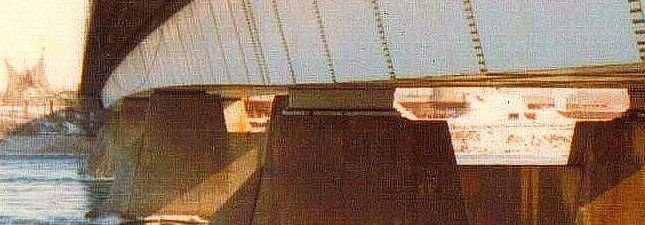 |
| Copenhagen, from my flickr |
I bring this up because I am working on a local North-American project for private clients and I was musing about alternate materials like bamboo. I am a vector, like most architects, for cross cultural forms and materials. Vectors can carry diseases like mosquitoes do malaria, can fertilize like bees, or they can annoy like architects with out-there proposals.
It would be a risk for my client to consider non-local, non-traditional (in North America) roofing materials, however carefully detailed. They pay me mostly to avoid having to deal with the building officials who can be a hurdle, and who likes things tied up in nice local ribbons.
Did my training prepare me for this vector role? Did it give me the selling skills, the confidence and the ability to pierce the cultural protection force field.
No.
It did give me some technical and design exposure, but it tried to destroy any confidence I may have had about my ideas, like many professional schools do. Destroy the character and rebuild it. Pavlov showed that that does not work for all character types. He had identified four types in his research on brainwashing for the Russian military:
"the strong and impetuous type, the strong equilibrated and quiet type, the strong equilibrated and lively type, and the weak type",i.e.:
- Those who took it, who fought back, who grew stronger but who were not prone to being followers, who may hold secret grudges (Jason Bourne)
- Those who held their core, and could later be commanded and trusted (Arnold Governator...)
- Those who talked back, who talked it though, but who broke in a good way, who could be trusted (Bruce Willis)
- Those that broke and that could not become strong again (Darth Vader)
I am not sure where I fit in. Maybe this is a spectrum. I know that I hold no love for
I think I am an "advisory vector". I usually will test the waters with a client, propose alternatives, and not be too upset if they go with the middle of the road. It is after all their money, their baby. This avoids disasters like the Toronto spiky museum additions, and the 1776 foot high skyscrapers that mean nothing, but it also tends to promote the status quo. Public clients are another story some might argue, but I disagree. Public money should not be abused for the benefit of the ego of the star architect. It is a difficult call, since good star architecture can revive a place, bring tourism money, but it can also be just annoying and self-serving and an abuse of the committee process, not to mention public funds..
Can someone link this to ethics of the profession? Is it more ethical to be a cross pollinating vector? Is it more moral to be a bee than to be a carpenter ant? Architecture, when it happens, gives meaning to construction, but it has to happen, and for it to happen, there has to be a will, and a will must exercise power, leadership. This is not a given in many contracts.
